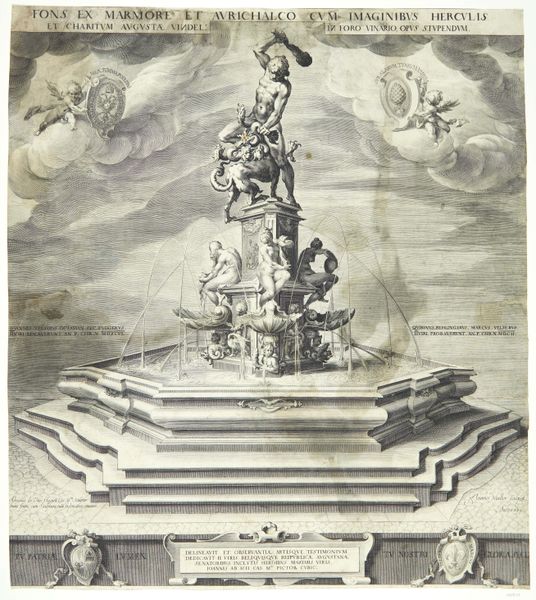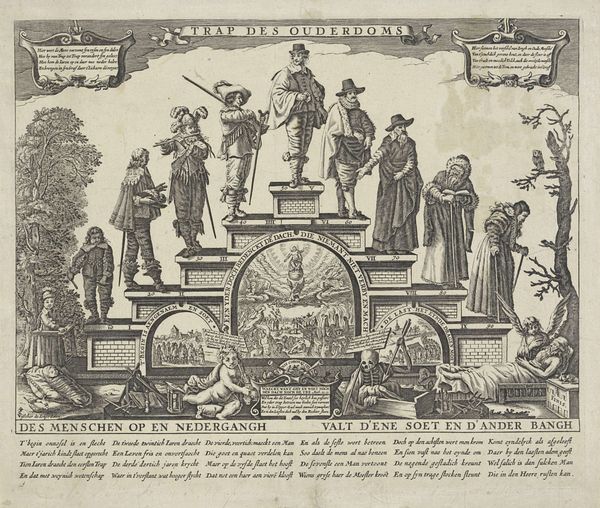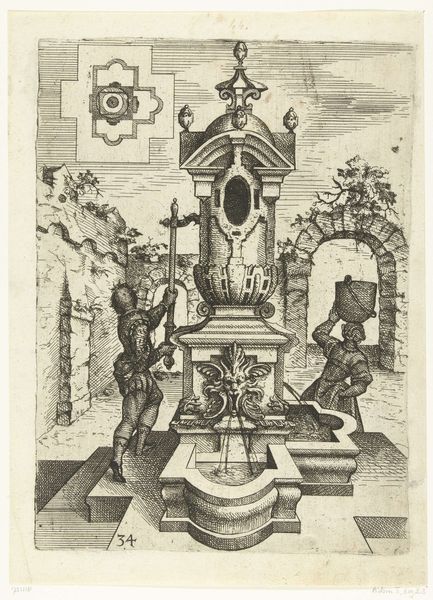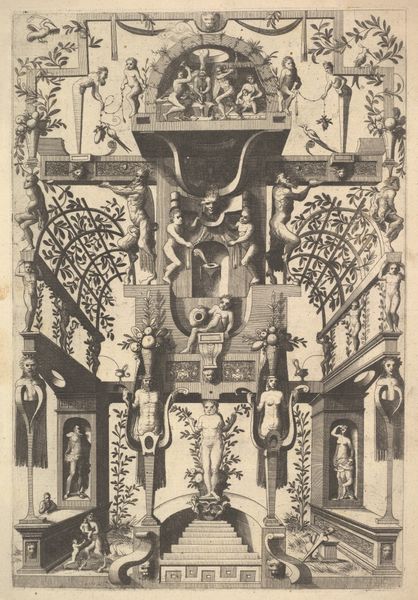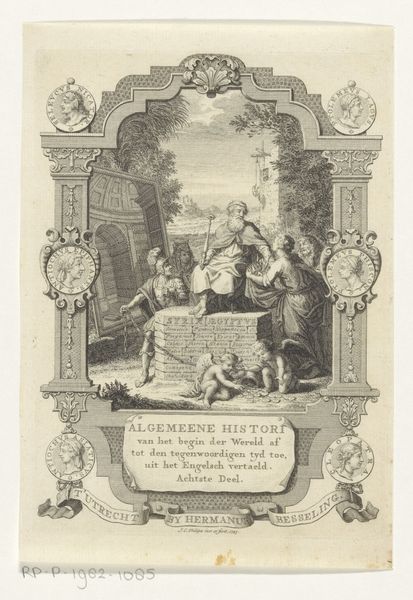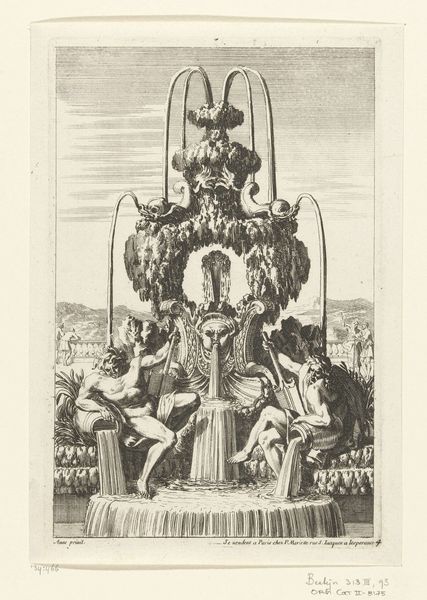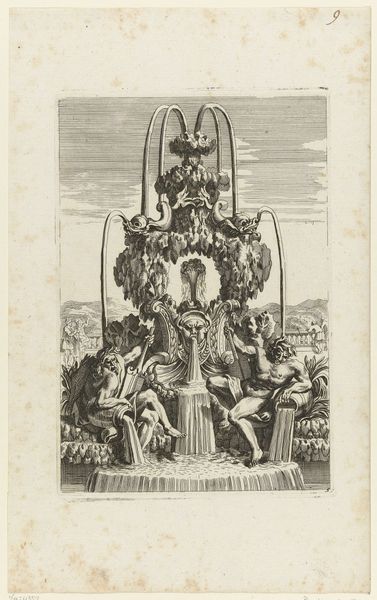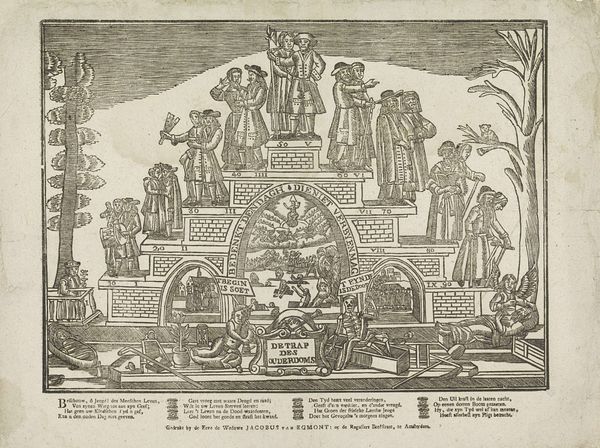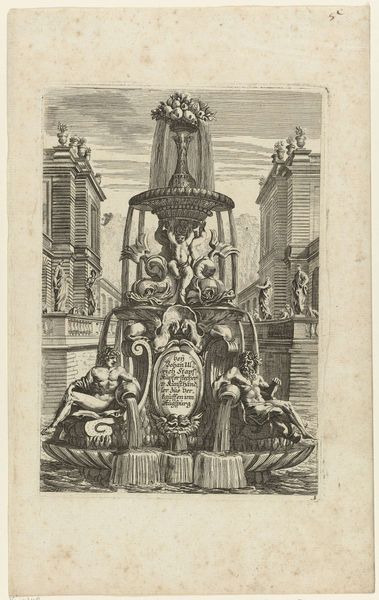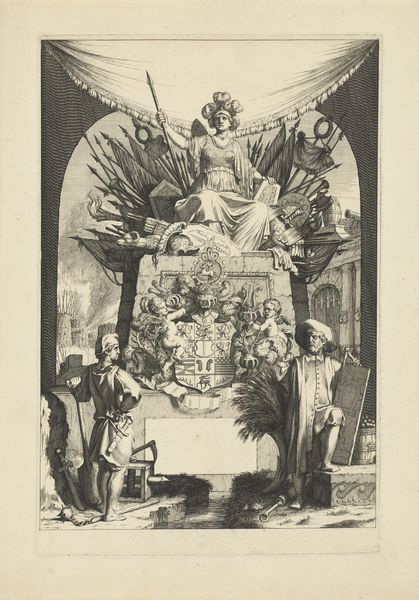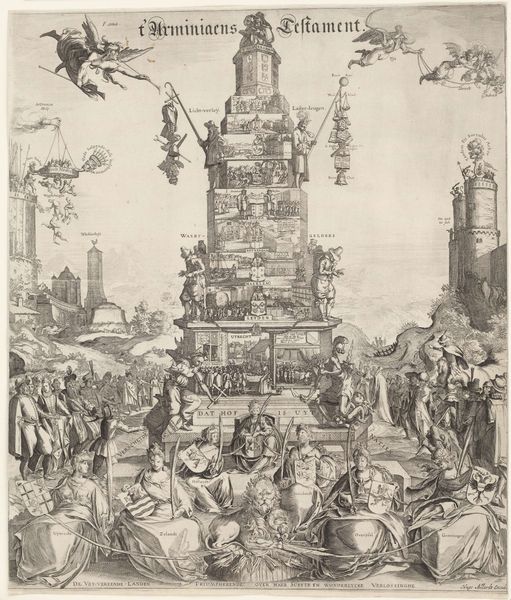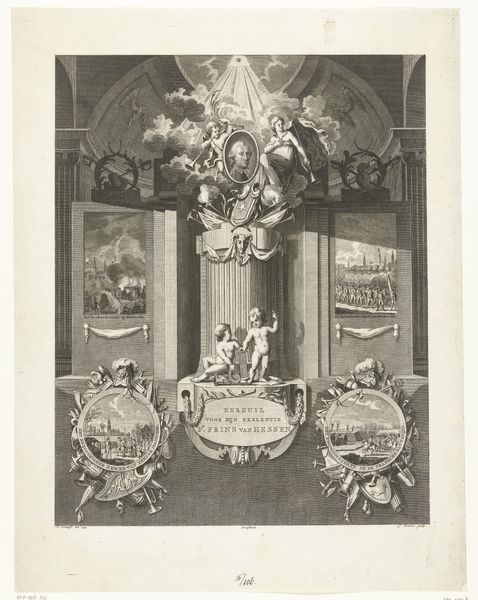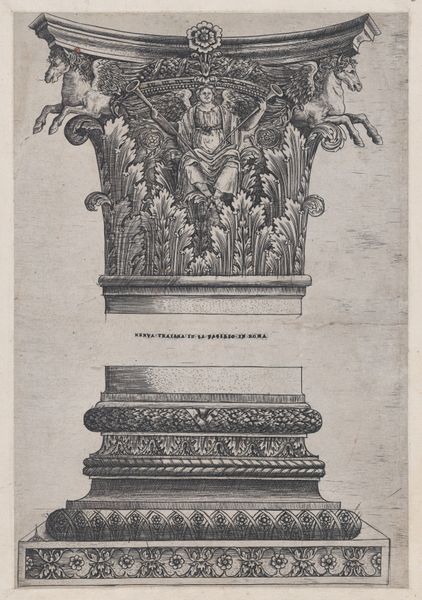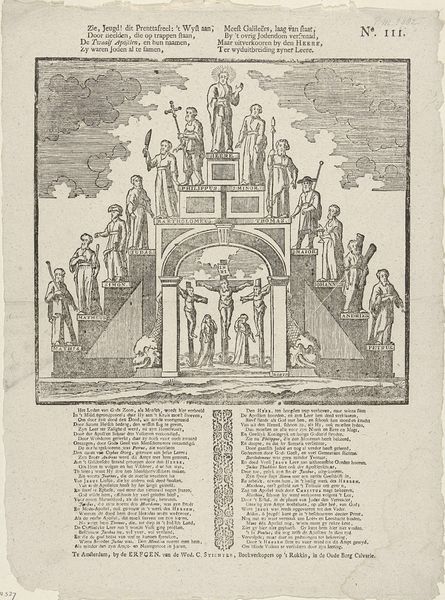
Pompa Introitus...Ferdinand, Austriaci. Antwerp 1635
0:00
0:00
drawing, print, engraving
#
drawing
#
allegory
#
baroque
# print
#
landscape
#
figuration
#
cityscape
#
history-painting
#
engraving
Copyright: Public Domain
Editor: This print, "Pompa Introitus...Ferdinand, Austriaci. Antwerp," was created by Peter Paul Rubens in 1635. The intricate engraving feels almost like a stage design, incredibly busy and detailed. What structural elements jump out to you in this piece? Curator: The composition immediately strikes me as organized around a clear vertical axis, reinforced by the central tree motif and the archway below. However, this central stability is juxtaposed with dynamic, almost chaotic arrangements of figures and allegorical elements flanking either side. Consider the balance of textures, from the smooth planes of the arch to the meticulously rendered, rough surfaces of the rocky terrain. Editor: That tension between order and chaos is really interesting. It’s also really dense, with details packed into every corner. What about the symbolism? Curator: Before interpreting specific symbols, let's appreciate the way Rubens uses line and form to create visual hierarchy. Note how the eye is led upwards by the arrangement of figures and objects. The strategic use of light and shadow also guide the viewer’s gaze, emphasizing certain areas while obscuring others, thus directing the narrative flow within the pictorial space. Ask yourself, how does this careful manipulation of visual elements contribute to the overall meaning and impact of the work? Editor: That focus on form over content really illuminates the careful choices Rubens made. I appreciate that the engraving becomes almost like a language itself. Curator: Precisely. It’s through analyzing the structure, composition, and the formal relationships between elements that we begin to decode the work's deeper meanings, understanding the artist's intent and the values of the historical and cultural context within which it was created.
Comments
No comments
Be the first to comment and join the conversation on the ultimate creative platform.
